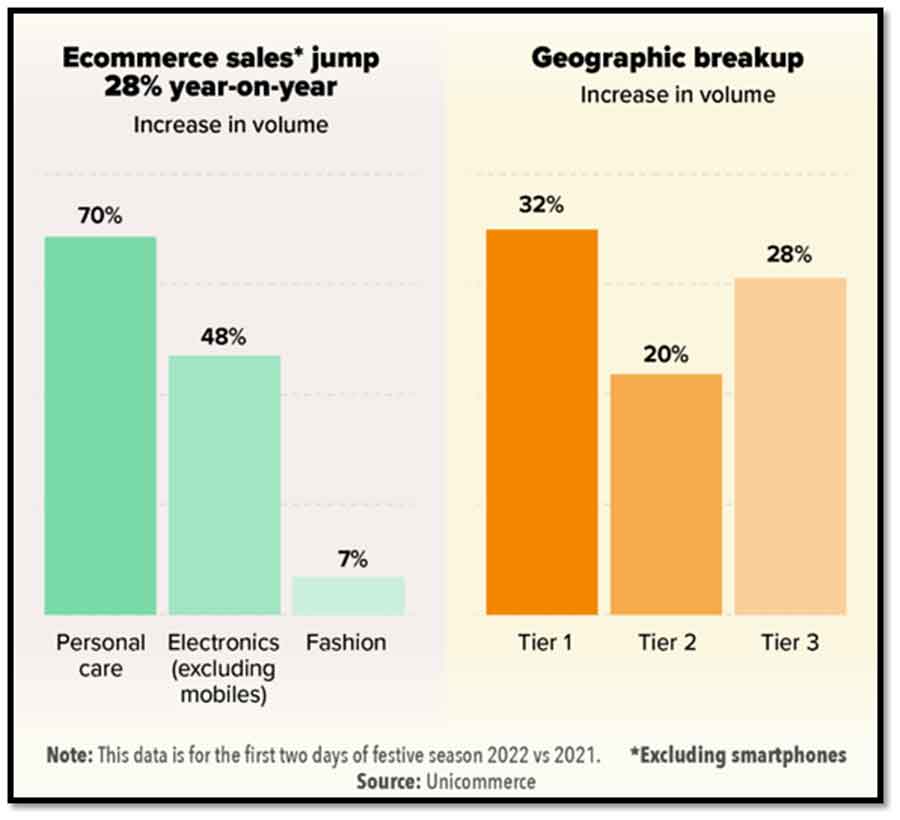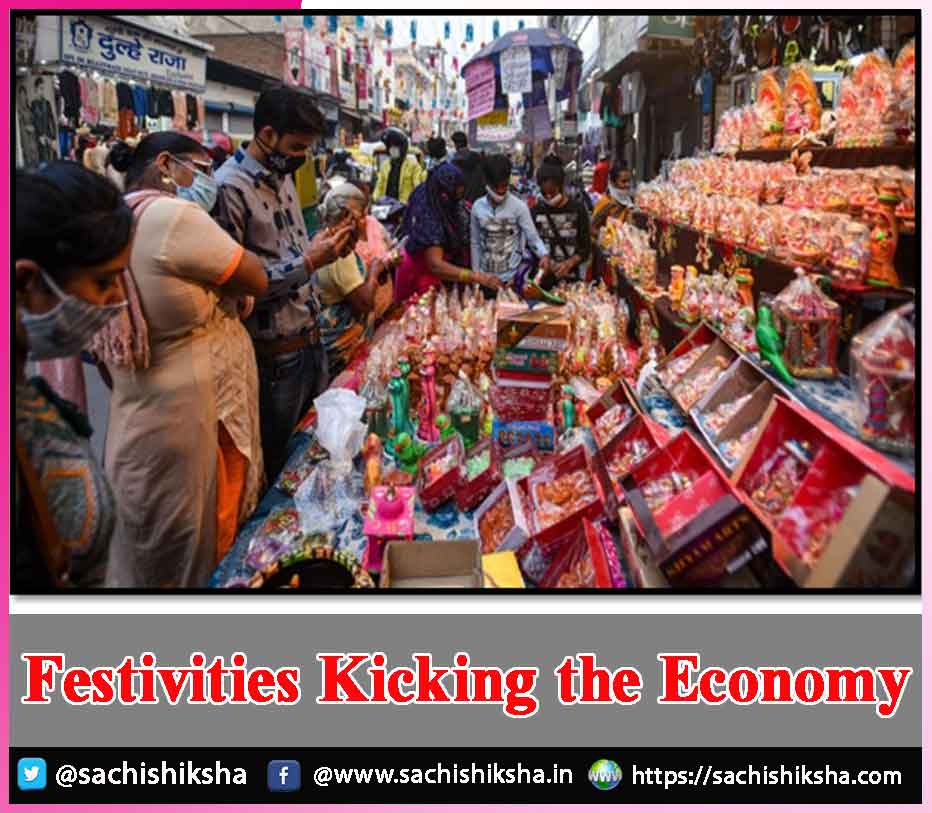Festivities Kicking the Economy
Introduction: From delicious sweets to enchanting fireworks, India is a country with many amazing festivals that not only boost the happiness of families but also boost the economy of the country. From Diwali, Dussehra, Ganesh Chaturthi, to Festival Christmas, Easter, Eid and Ramzan, the list of celebrations goes on.
Each festival with its unique way of celebration gives a ton of business opportunities to people. With the surge in purchasing new clothes to gifting presents, business sees a boom during these festivities. From a five rupees chocolate to share among kids for Halloween to buying gold jewellery for loved ones, the people are all willing to spend their money.
(Picture depicting the boom in local retailers’ presence and sales during the festive season)
Table of Contents
Durga Puja, Diwali & Ganesh Chaturthi:
In 2019, a British Council study estimated the Durga Puja economy at approximately Rs 32,000 crore, contributing to 2.6% of the West Bengal state domestic product. Small retailers are the driving force for the puja preparations. From the sculptors of Maa Durga to local sweet makers, many people find livelihood opportunities during the festival season. The 2017 analysis by Associated Chambers of Commerce and Industry of India (ASSOCHAM) roughly estimated that Durga Puja contributed more than Rs 40,000 crore to the Indian economy.
Especially during Diwali, where families enjoy the sweets at home and colourful sparks in the sky, the supporting industries generated employment which helped nearly 40 lakh families witness an increase in their annual earnings. A similar scene is witnessed during Ganesh Chaturthi in Raigad district of Maharashtra where over two lakh people are employed in idol making factories that generated a revenue of over ₹600 crore. The above statement just proves why Ganesh Chaturthi is regarded as the biggest economic event of Maharashtra.
The exports of the country also see a significant benefit due to the growing demand for Ganesha idols internationally as well. The United Kingdom, United States and Australia are active importers of idols. These are the numbers from a particular district in the country, just extrapolate the same to our vast and culture-rich country. The flower vendors have their graph turning upwards, the consumer appliances get sold like hot cakes. Driven by the festival discounts, television sets, kitchen appliances and mobile phones sales pump the revenue of the businesses as the sales conversion rates reach as high as 80%.
E-commerce

In today’s era of e-commerce, backed by offers that last not just days but weeks on end, online purchases increase tremendously during the festival season. Amazon’s Great Indian Festival Sale, Flipkart’s Big Billion Days, are two of the giants that lead the festive sale movement. Flipkart earned Rs. 1400 crore on the first day of its Big Billion Days, the record for highest sales achieved in a day. During the first 4 days of their grand offerings this year, big e-commerce companies sold products worth Rs 24,500 crore.
The fast-moving consumer goods (FMCG) recorded a 12% spike in the Navratri festival season. Tech giants like Samsung, LG are crowded with demand and the stay-at-home entrepreneurs, with their unique handicrafts and home décor, have a platform approached by millions to spread their business. India’s leading gifting brand, Ferns and Petals, announced that over five lakh Rakhis, ten lakh pieces of chocolates and sweets were sold during the Raksha Bandhan, which together contributed around 50% of their revenue. With increasing emphasis on self-care, wellness gift cards and gift hampers are a unique niche of business too.
Makar Sankranti, Pongal, Holi, Lohri & Bihu:
It’s the season for happiness and a huge chunk of population springs for new vehicles for their daily commute, this resulted in the auto sales being up by 21% compared to last year. The RBI sweetens the deal by lowering the interest rates, as a result of which, people take increased amount of loans to finance their vehicle dreams. Event organizing agencies, both domestic and international, provide their support during the conduct of the festivals on a social level, thereby creating more employment opportunities and revenue generation.
The harvest season in January, known as Makar Sankranti, Pongal, Bihu and Lohri, is itself a big boost to the agriculture sector. More than 50% of the Indian population being dependent on agriculture and related activities, the harvest season paves the way for Indian market to be fully stocked and ready for upcoming festivals. The apparel industry experiences a surge in its purchases as many people purchase new clothes during this season. Paving way to Holi, the water colours, rangoli, water guns, contribute a gigantic Rs. 20 crores to the Indian economy.
As we move to the gods own country, Kerala, people brought nearly 80 lakh kilograms of milk in just four days and the state exchequer managed to earn whopping Rs. 550 crores on Uthradam — the first day of Onam in 2022. Students and working professionals who live away from family, travel back home for festivities. As the festivals of the country are telecast, a large number of tourists throng to experience the same. Based on data by Thomas Cook, air travel fares increase remarkably but the bookings still witness a 90% uptick year on year. Due to this increased demand, the hotel room tariffs are up by huge margins and the restaurant industry is a gold mine for revenue.
Festivals of the West:
The influence of the west has started a wave of celebrating Halloween, Valentines, New Year’s Eve, which encourage gifting traditions, in turn creating great business for gifting brands. India’s Christmas exports are noteworthy. The top five countries importing Indian Christmas goods are the United Arab Emirates, the US, Mexico, Thailand, and the Philippines, which together account for 43% of the country’s exports. India’s favourable policies and cost-effective goods are one of the few factors that helped achieve the exports.
Conclusion: The festivals in India are events filled with joy and traditions that bring millions to the country’s gross domestic product and pump up the economy.












































